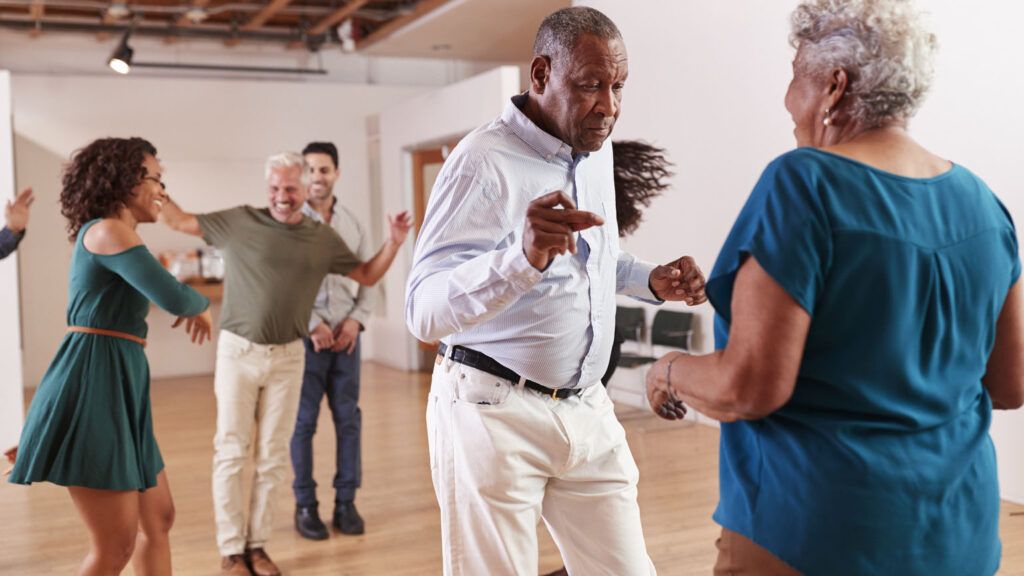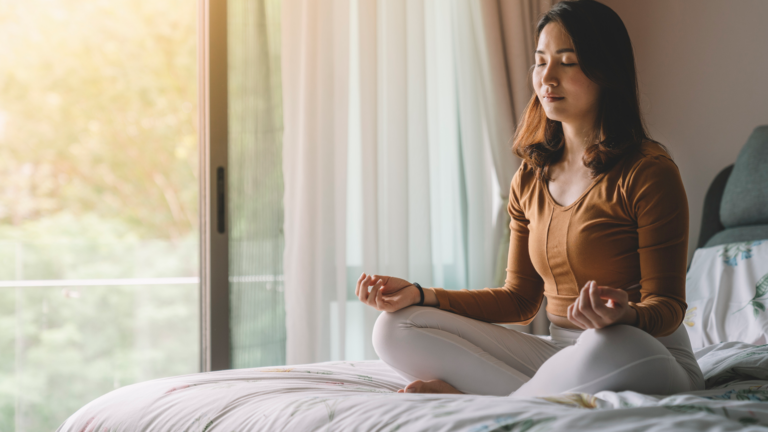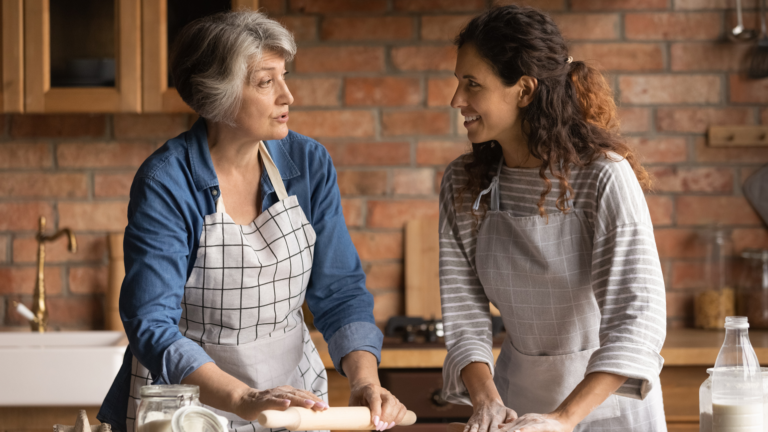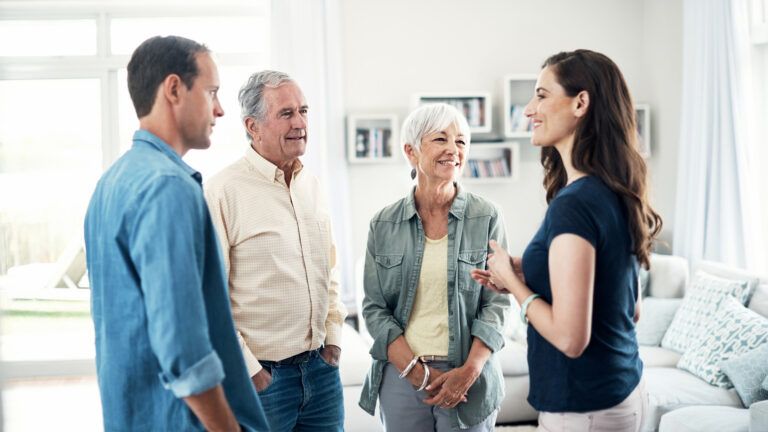Julie Hayes is the Content Manager at Benjamin Rose Institute on Aging.
Maybe your loved one studied painting as a young man or woman. Or maybe he or she has never drawn more than a straight line, but wants to experiment with a watercolor of a tree outside. It could be that she has a sudden desire to write down childhood memories or that he has mentioned wanting to try ballroom dancing. Regardless of your loved one’s skill sets and abilities, when it comes to creative expression, it’s the spark that matters. Meaningful artistic pursuits of any sort can promote personal growth and well-being in older adults, and as a caregiver, you can encourage your loved one to get on board.
Gene D. Cohen, a psychiatrist specializing in geriatric mental health, documented the different phases of creativity in late life in his book The Creative Age. Cohen suggested that older adults aged 70 and over experience a “creative burst” fueled by the desire to resolve unfinished business, fulfill long held dreams and make a lasting and final statement through creative works (Cohen, G.D. (2000). The Creative Age).
According to research, taking part in artistic endeavors can have a wide range of positive impacts on older adults. Participating in the arts can allow them to:
· Reflect on their lives and experiences
· Improve their physical and mental health
· Make connections and share their knowledge and thoughts with others
· Increase morale and improve mood
· Foster personal growth and lifelong learning (Rogers, N. (2001). Person-Centered Expressive Arts Therapy. In J.A. Rubin (Ed.), Approaches to Art Therapy: Theory and Technique, second edition (pp. 230-237) London: Routledge.)
Whether your loved one is flexing an artistic muscle for the first time, or returning to a pursuit from the past, it’s never too late to get started. After all, Grandma Moses took up a career in painting at the age of 78. You can help by suggesting your loved one explore a creative outlet, and offering your support throughout the process. Among the possibilities you might present:
1. Dancing
Your loved one may enjoy moving to music as a means of both physical and creative exercise. Dancing is a great way for older adults to improve their:
· Gait
· Balance
· Range of motion
· Body image
· Muscle endurance
· Flexibility
If your loved one has memory loss, dancing can also help exercise his or her ability to remember and retrieve information through learning and recalling steps and routines (Keogh, J.W., et al. (2009) Physical benefits of dancing for healthy older adults: A review. Journal of Aging and Physical Activity, 17, 479-500).
It’s not even necessary to leave the house to get immersed in dance. You could provide your loved one with instructional DVDs or find some YouTube tutorials, many of which are designed specifically for older adults. Playing his or her favorite music or trying out moves from back in the day can make the experience more personal. If you’d prefer to work with an instructor you may want to check with your local senior center. Many offer dance classes and socials for older adults. There are also national programs such as BeMoved and SilverSneakers that tailor dance lessons for older adults.
Don’t forget to consult with your loved one’s doctor before starting any program of physical activity.
2. Writing
All forms of writing—fiction, nonfiction and poetry—can allow your loved one to capture thoughts, emotions and memories. Research shows that writing can also decrease depression, reduce stress and improve self-esteem.
You can begin by asking your loved one what sort of writing appeals to him or her. Many older adults enjoy life story writing to reflect on their past experiences, while others prefer journaling or creative fiction. Regardless of which writing form your loved one likes best, you can facilitate the process by providing writing tools, a comfortable environment and any other necessary guidance to help get the words down. There are also national programs that can help get your loved one writing, such as the Alzheimer’s Poetry Project and LifeBio. If your loved one has an interest in publishing his or her work, you may want to look into Passager Books, which is dedicated to showcasing the works of writers over the age of 50.
3. Singing, Playing or Listening to Music
There are many ways for older adults to express themselves through music, and doing so can have healing benefits. Music therapy, the clinical use of music to strengthen overall wellbeing, can give your loved one the opportunity to listen to and make music, while helping him or her manage pain, improve sleep and decrease anxiety. A research study centered on the Making Connections Through Music program, developed by the Benjamin Rose Institute on Aging, also showed that musical programs for individuals with dementia can increase social interaction, improve mood and contribute to an overall sense of belonging.
Your loved one could also get involved in music by:
· Practicing an instrument he or she has always liked to play, or picking up a new one
· Joining a choir, band or orchestra
· Being part of a music group at a local senior center
· Studying with a vocal coach or singing along to to old albums or online music at home
· Whistling and humming
4. Making Art
As with musical expression, many older adults find art making to be therapeutic, and studies show that it can enhance cognitive function, reduce depression and soothe anxiety (Castora-Binkley, M., Noelker, L., Prohaska, T., & Satariano, W. (2010). Impact of arts participation on health outcomes for older adults. Journal of Aging, Humanities, and the Arts, 4(4), 352-367). Your loved one can pick from an array of ways to create art. Something basic, like finger painting, may be a good choice for someone with no experience, while oil painting or sculpting may be better for a person with some art background. You could encourage your loved one to experiment with:
· Coloring books
· Clay sculpting
· Crafts such as weaving, jewelry making and pottery
· Sketching with colored pencils or chalk
· Mixed media collages
· Watercolor painting
· Pressed flower art
· Scrapbooking
There are endless ways for older adults to get creative. For more ideas and information, you can search for lessons online, or reach out to local senior and community centers and libraries to explore their offerings. You may also want to check into online locators for music and art therapists.
The important to thing is to give your loved one as much support as possible since creativity is cause for celebration at any age!






